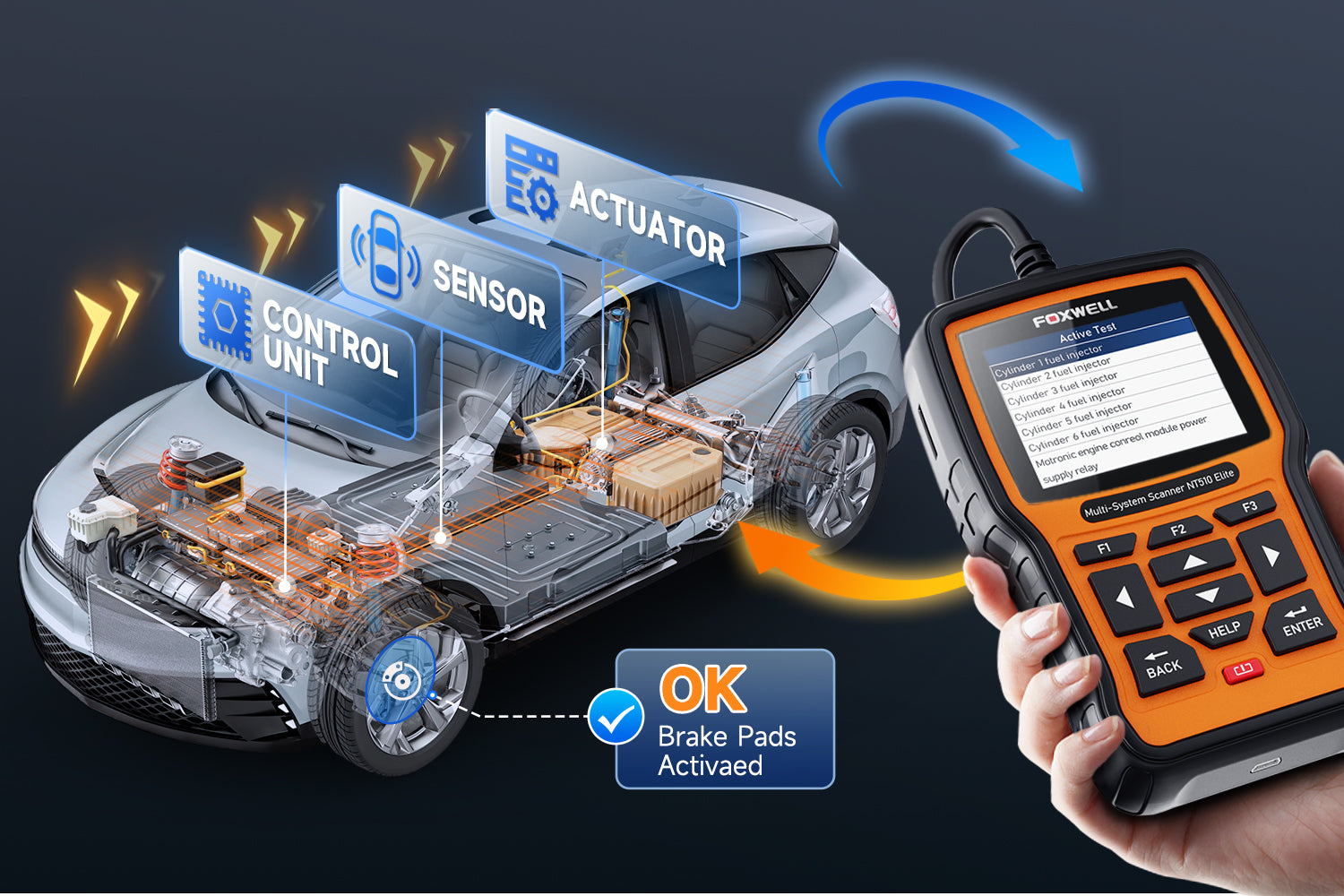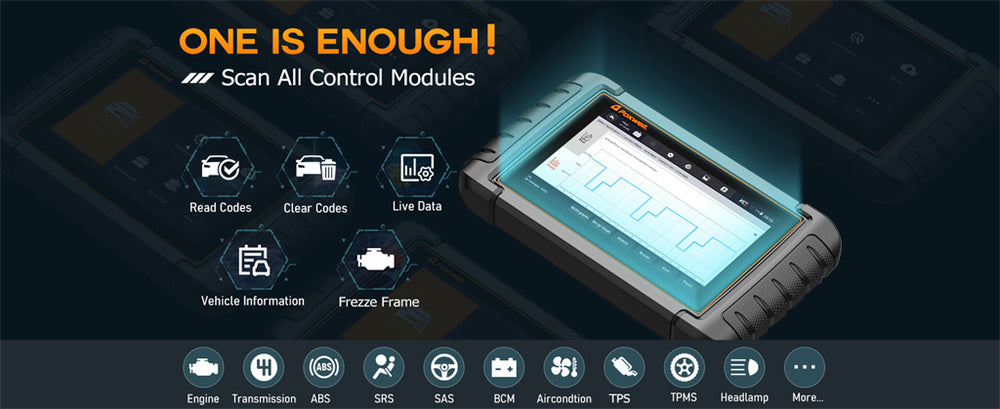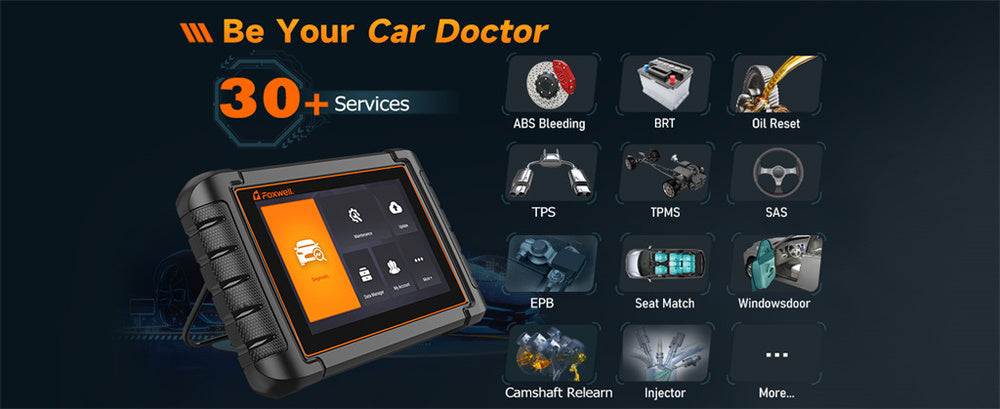Taking a pleasant road trip, listening to the hum of your engine as you enjoy its smooth hum, when suddenly, your car begins to shudder, and power drops off dramatically—leaving a rough, jittery ride in its wake. What is happening here? It could be an issue of cylinder imbalance, where one or more cylinders aren't pulling their weight, leading to engine performance issues and creating havoc for engine performance.
Diagnosing such problems can be like searching for a needle in a haystack without the right tools. That's where scan tools for cylinder balance tests come in. They act like detectives' magnifying glasses to pinpoint which cylinder is causing trouble.
Think of a scan tool as the doctor for your car. Just as a doctor uses a stethoscope to listen in on what's going on within your body, a scan tool listens in on engine sounds to pinpoint exactly where problems exist in your car's engine—no guesswork or unnecessary repairs are required here; only accurate Diagnosis.
There explore the world of scan tools used for cylinder balance tests. We will cover their operation, benefits, and practical usage techniques. By the end, you will have all the knowledge to keep your engine running efficiently by ensuring every cylinder fires on all cylinders - literally!
What Is a Cylinder Balance Test?

A cylinder balance test is a diagnostic tool used to assess the performance of each engine cylinder and help evaluate their contribution equally to power output. Suppose one or more underperforming cylinders contribute less. In that case, this may cause rough idling, poor fuel economy and reduced power, resulting in issues like rough idling, reduced economy or reduced output from your engine.
Test Methodology Temporarily turning off each cylinder and monitoring its effect on engine RPM can reveal which one may not perform as effectively as expected. By comparing RPM drop-off rates between each cylinder, you can identify which one may not be meeting performance benchmarks.
How Scan Tools Work for Cylinder Balance Tests
A high-quality scan tool like the Foxwell NT809BT can make performing cylinder balance tests straightforward and efficient. These tools connect directly to your vehicle's OBD-II port and communicate directly with its engine control unit (ECU), providing an efficient cylinder balance testing experience. Here's an in-depth breakdown of their general working process:
- Connection: Scan tools connect directly to a vehicle's OBD-II port for use, with wireless technology such as the Foxwell NT809BT using Bluetooth for wireless use and making it simple and untethered.
- Selection: The user selects the cylinder balance test function from their scan tool's menu. Foxwell NT809BT offers an intuitive user interface for more straightforward navigation.
- Disablement: While running, the scan tool sequentially turns off each cylinder by sending commands to the ECU that temporarily cut off fuel or spark for each one.
- Measurement: The Foxwell NT809BT provides real-time data showing changes to RPM as each disabled cylinder is disabled, providing real-time monitoring of each RPM change as they become disabled.
- Analysis: The scan tool compares RPM drops between cylinders to identify any underperforming ones, with any significant variations indicating which require further inspection or repair.
With a scan tool such as the Foxwell NT809BT, issues related to cylinder performance can be quickly and accurately diagnosed, helping maintain optimal engine health and performance.
Benefits of Utilizing a Scan Tool for Cylinder Balance Tests
Utilizing a scan tool for cylinder balance tests offers several advantages:
- Accurate Diagnosis: Get accurate cylinder diagnoses fast for improved repairs and maintenance strategies.
- Time-Efficient: Automating cylinder disabling and rpm drop measurement, Automation can drastically cut diagnostic time compared to manual methods.
- Comprehensive Data: Deliver detailed real-time engine performance information that helps identify complex issues that need to be visible through basic troubleshooting techniques.
- Cost-Effective: By accurately diagnosing the source of the issue, you can prevent unnecessary parts replacements and repairs, saving both money and time in the long run.
- Enhance Engine Performance: Regular cylinder balance testing can ensure optimal engine performance by providing all cylinders contribute equally to power production.
Key Features to Consider in a Scan Tool
When purchasing a scan tool for performing cylinder balance tests, be aware of these essential features:
- Compatibility: Make sure that the tool you select is compatible with your vehicle's make and model.
- Ease of Use: Search for an intuitive interface with clear instructions.
- Live Data Streaming: Monitor real-time engine sensor information in real-time.
- Comprehensive Diagnostics: Additional diagnostic functions like reading/clearing DTCs, misfire detection, and more are included in extensive diagnostic tools.
- Durability and Support: Reliable build quality and quality customer support services make for reliable build quality and superior support services.
How to Perform a Cylinder Balance Test With a Scan Tool
Utilizing a reliable scan tool to conduct a cylinder balance test requires taking three steps.
- Preparation: Before commencing any repairs on your vehicle, ensure it is on a flat surface and operating at optimal temperature. Gather all required tools - including the scan tool - including your scan tool.
- Connect the Scan Tool: Plug your scan tool into the vehicle's OBD-II port, typically found beneath the dashboard.
- Switch on the Ignition: Switch your vehicle's ignition to "ON", without starting its engine, to power and activate your scan tool and allow for communication with its ECU.
- Navigating to Cylinder Balance Test: Use your scan tool's menu to reach the cylinder balance test function.
- Conduct the Test: Follow the scan tool's instructions to selectively disable each cylinder in turn and measure any subsequent declines in RPM for each one.
- Analyse Results: Compare RPM drops across cylinders to identify any underperforming, as any significant differences indicate which cylinders require further inspection or repair.
- Underperforming Cylinders Need Repair: Based on your test results, do necessary repairs or maintenance for underperforming cylinders.
- Retest: Once repairs have been completed, conduct another cylinder balance test to ensure that all cylinders contribute equally to the system's success.

Conclusion
A scan tool for cylinder balance tests should be an essential tool in every vehicle owner's or professional mechanic's toolbox. Investing in quality scan tools allows for rapid Diagnosis of engine cylinder performance issues quickly and accurately, keeping engines running efficiently while saving time and money on repairs, maintaining optimal engine performance, and increasing vehicle reliability.
FAQs
What is a cylinder balance test?
A cylinder balance test measures each cylinder's performance by disabling them one at a time and observing the RPM change, identifying underperforming cylinders.
How do premium scan tools help with cylinder balance tests?
They offer real-time data, precise RPM measurement, and user-friendly interfaces, making the tests quicker and more accurate.
Can premium scan tools perform other diagnostics?
Yes, they typically offer functions like reading/clearing DTCs, live data monitoring, and special resets, making them versatile for comprehensive diagnostics.




Leave a comment
This site is protected by hCaptcha and the hCaptcha Privacy Policy and Terms of Service apply.